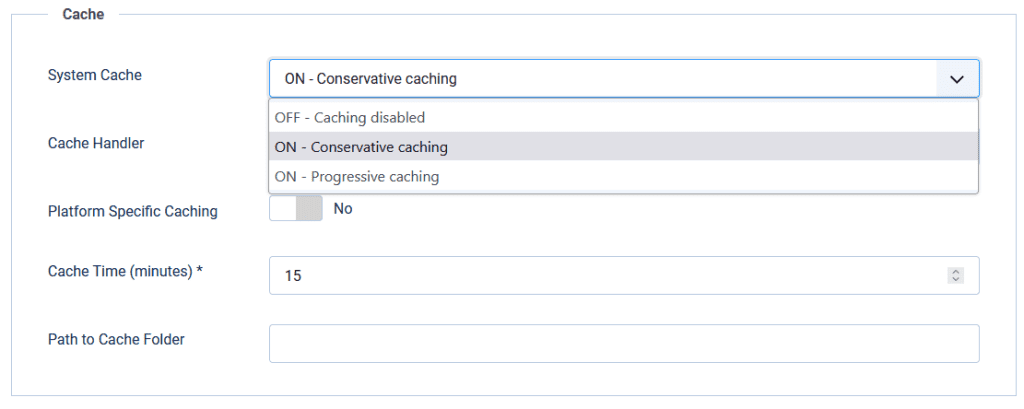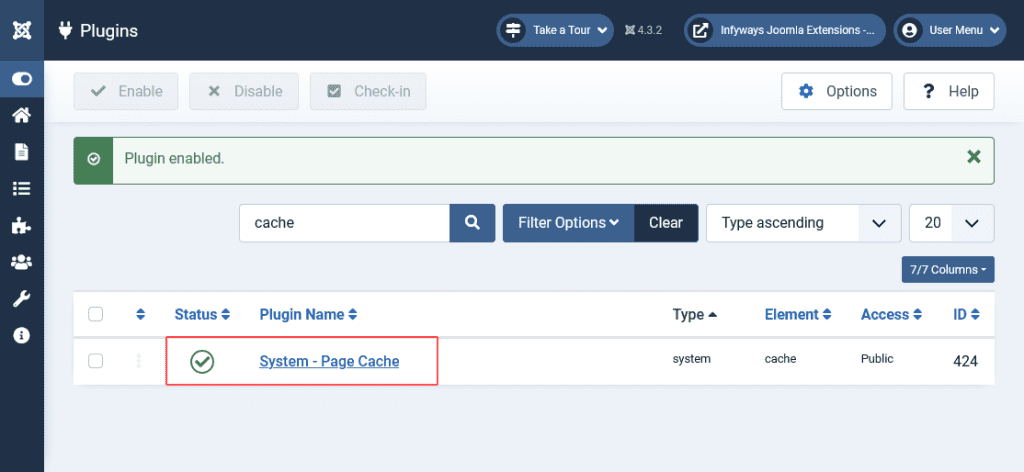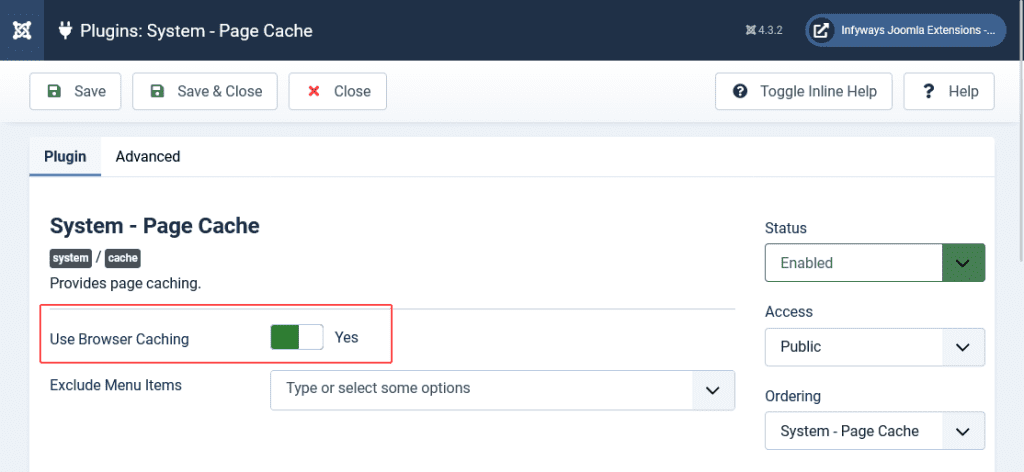Joomla
Caching in Joomla: An Essential Tool for Accelerating Your Website Speed
Written by Abhilash Sahoo•Updated on July 7, 2023•6 min read

Hello Joomla enthusiasts! Today, we're going to delve into the world of caching and its crucial role in Joomla. You might be wondering: What is caching and why is it so important? Let's embark on this journey together!

 Enabling the page cache in Joomla is straightforward. Go to Extensions > Plugins, then search for "System - Page Cache" and enable it. It is a type of caching that saves an entire page's HTML, significantly reducing server load.
Enabling the page cache in Joomla is straightforward. Go to Extensions > Plugins, then search for "System - Page Cache" and enable it. It is a type of caching that saves an entire page's HTML, significantly reducing server load.
 Browser caching can bring remarkable improvements in your website's loading speed and enhance user experience manifold. Check out our guide on how to enable, disable, and clear cache in Joomla for detailed instructions.
Browser caching can bring remarkable improvements in your website's loading speed and enhance user experience manifold. Check out our guide on how to enable, disable, and clear cache in Joomla for detailed instructions.
Introduction to Joomla Cache
Caching, in the simplest terms, is a process that stores a version of your website content to deliver it quickly to the visitors without needing to generate it from scratch every time. The necessity of caching arises from its ability to significantly enhance website speed, thus, improving user experience and Joomla SEO ranking. Joomla presents you with a variety of caching options: Page Caching, Conservative Caching, and Progressive Caching. Each type caters to different needs and situations, ensuring that your Joomla website functions optimally at all times.Cache Settings in Joomla
To access the cache settings in Joomla, head over to System > Global Configuration > System Tab. In the Cache Section you will find 3 System Cache options:
- Caching Disabled: As the name suggests, no caching happens when this option is selected.
- Conservative Caching: This option caches the content for each visitor separately.
- Progressive Caching: This more aggressive form of caching stores the same content for all visitors, making it especially beneficial for websites with mostly static content.
Cache Handler
Under the cache settings, there's another crucial setting you need to know about - the Cache Handler. This option determines how Joomla stores the cached content. The two common cache systems are the 'File' and 'Memcached', each having their unique benefits.Cache Time
The Cache Time is another significant factor that determines the lifespan of cached content. It's essential to set the cache time based on the dynamics of your website. For instance, a news website may require a shorter cache time due to frequent content updates.Page Cache
 Enabling the page cache in Joomla is straightforward. Go to Extensions > Plugins, then search for "System - Page Cache" and enable it. It is a type of caching that saves an entire page's HTML, significantly reducing server load.
Enabling the page cache in Joomla is straightforward. Go to Extensions > Plugins, then search for "System - Page Cache" and enable it. It is a type of caching that saves an entire page's HTML, significantly reducing server load.
Browser Caching
Browser caching takes caching a step further by storing static files (like CSS, JavaScript, and images) of your website in the visitors' browsers. This reduces server load and increases the speed for returning visitors. To enable it, simply navigate to Extensions > Plugins, find "System - Page Cache", and enable "Use Browser Caching". Browser caching can bring remarkable improvements in your website's loading speed and enhance user experience manifold. Check out our guide on how to enable, disable, and clear cache in Joomla for detailed instructions.
Browser caching can bring remarkable improvements in your website's loading speed and enhance user experience manifold. Check out our guide on how to enable, disable, and clear cache in Joomla for detailed instructions.
Frequently Asked Questions
How to clear cache in Joomla 4? To clear the cache in Joomla 4, follow these steps:- Navigate to the Joomla Administrator Panel.
- From the ‘System’ menu, choose ‘Clear Cache’.
- Choose the items you want to clear by checking their boxes or simply click ‘Check All’.
- Click ‘Delete All’ button on the toolbar to clear the selected cache files.
- Log in to the Joomla Administrator Panel.
- Navigate to ‘System’ -> ‘Global Configuration’.
- On the ‘System’ tab, find the ‘Cache Settings’ section.
- Set the ‘Cache’ option to ‘OFF – Caching Disabled’.
- Save your changes.
- Access your website’s file system either through FTP or your web host’s file manager.
- Go to the ‘cache’ folder, which is usually located in the root directory of your Joomla installation.
- Delete all the files and folders inside the ‘cache’ folder. Do not delete the ‘cache’ folder itself.




